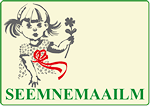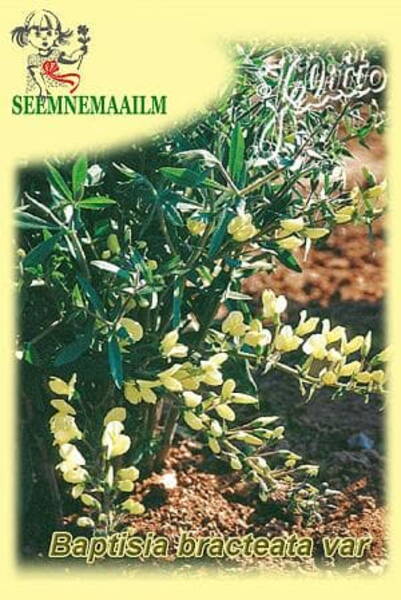Your shopping cart is empty!
Longbract wild indigo (cream false indigo)
White wild indigo - Baptisia bracteata var. leucophaea.
Its closest relatives are mimosas and acacias. Plants of this genus mainly grow in forest-steppe zones of Europe, the Mediterranean, Central Asia and the prairies of North America. Thickets of baptisia form cushions tightly pressed to the ground.
Plant height up to 50 cm.
Inflorescence color: pale yellow.
Flowering time: June-August.
Winter hardiness zones: Z3-9.
Location: grows well in dry, sunny places.
Soil: undemanding to soil. Can grow on shifting sands and on infertile clay soils. Tolerates moisture deficiency well. Does not require careful maintenance.
Reproduction: by dividing the bush in early spring or after flowering in early July. Can also be propagated by seeds, which are planted in the fall to a depth of 2-3 cm.
Use: for rock gardens. It is not easy to find baptisia in our rock gardens, although this unpretentious plant feels great in the climate zone of Estonia and deserves to be widely distributed in alpine gardens.
1.0 g = 75 seeds.

Eng.: Longbract wild indigo, white wild indigo, cream false indigo, cream-colored indigo. Bot.syn.: Baptisia bracteata var. leucophaea (Nutt.)
Its closest relatives are mimosas and acacias. Plants of this genus mainly grow in forest-steppe zones of Europe, the Mediterranean, Central Asia and the prairies of North America. Thickets of baptisia form cushions tightly pressed to the ground.
Plant height up to 50 cm.
Inflorescence color: pale yellow.
Flowering time: June-August.
Winter hardiness zones: Z3-9.
Location: grows well in dry, sunny places.
Soil: undemanding to soil. Can grow on shifting sands and on infertile clay soils. Tolerates moisture deficiency well. Does not require careful maintenance.
Reproduction: by dividing the bush in early spring or after flowering in early July. Can also be propagated by seeds, which are planted in the fall to a depth of 2-3 cm.
Use: for rock gardens. It is not easy to find baptisia in our rock gardens, although this unpretentious plant feels great in the climate zone of Estonia and deserves to be widely distributed in alpine gardens.
1.0 g = 75 seeds.

Eng.: Longbract wild indigo, white wild indigo, cream false indigo, cream-colored indigo. Bot.syn.: Baptisia bracteata var. leucophaea (Nutt.)











